18+ Sample Data Exchange Agreement
-
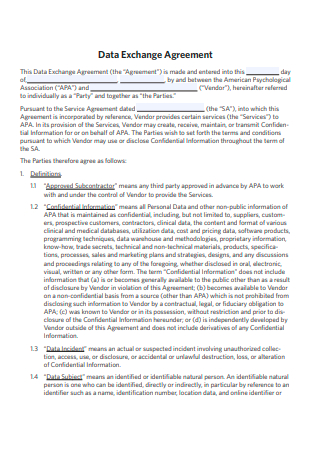
Data Exchange Agreement Template
download now -
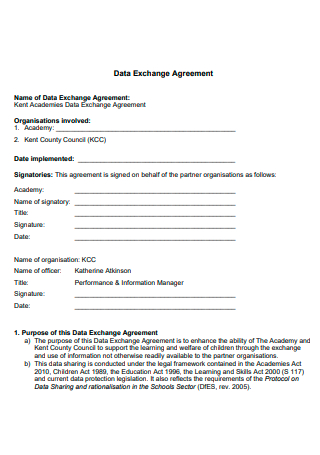
Basic Data Exchange Agreement
download now -

Electronic Data Exchange Agreement
download now -
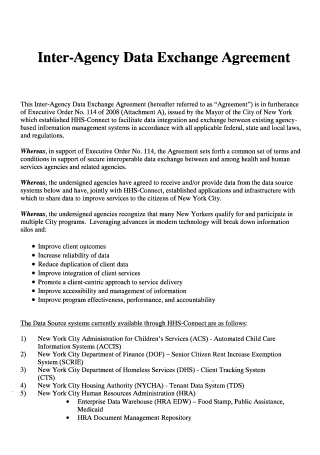
Inter Agency Data Exchange Agreement
download now -
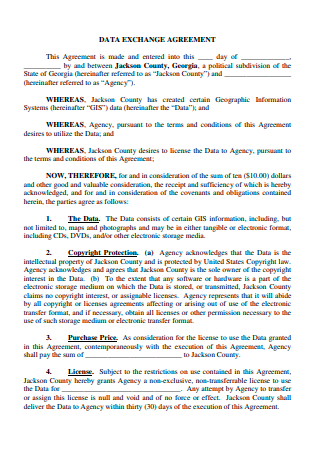
Data Exchange Agreement Example
download now -
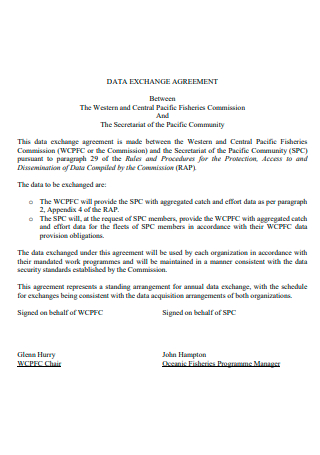
Data Exchange Agreement in PDF
download now -
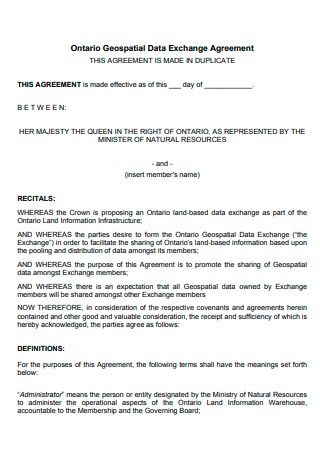
Formal Data Exchange Agreement
download now -

Final Data Exchange Agreement
download now -
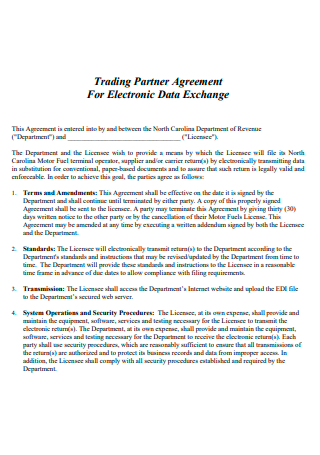
Electronic Data Exchange Trading Partner Agreement
download now -
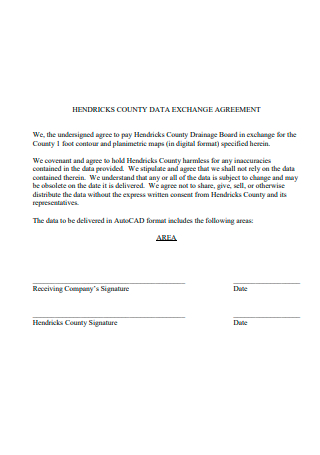
Simple Data Exchange Agreement
download now -
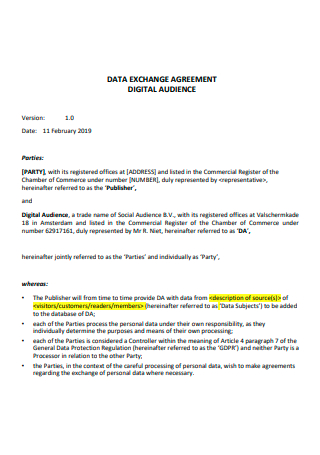
Digital Audience Data Exchange Agreement
download now -
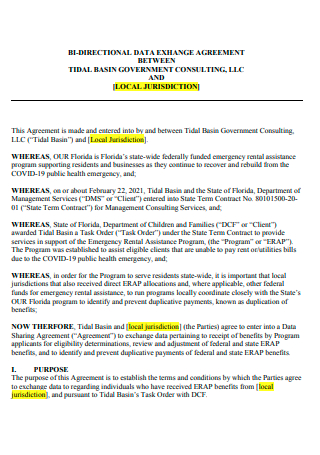
Bi-Directional Data Exchange Agreement
download now -
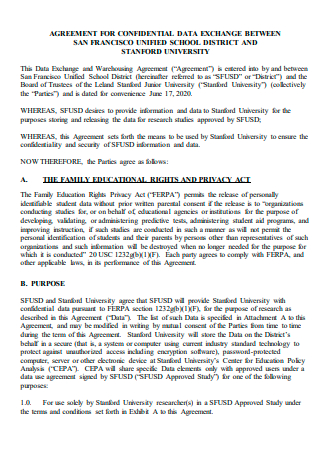
Confidential Data Exchange Agreement
download now -
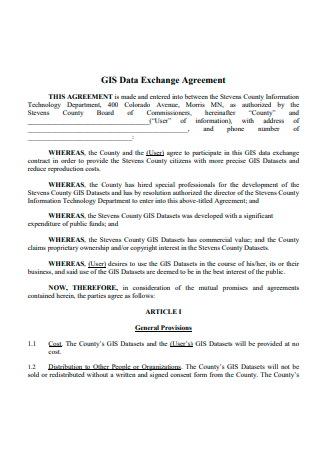
Sample Data Exchange Agreement
download now -

Customs Data Exchange Agreement
download now -
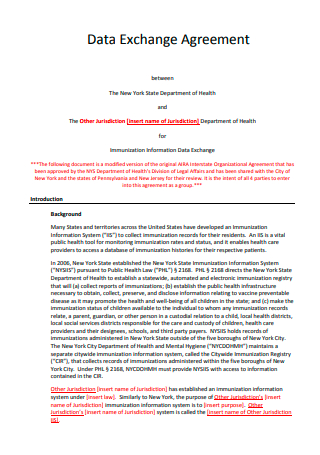
Printable Data Exchange Agreement
download now -
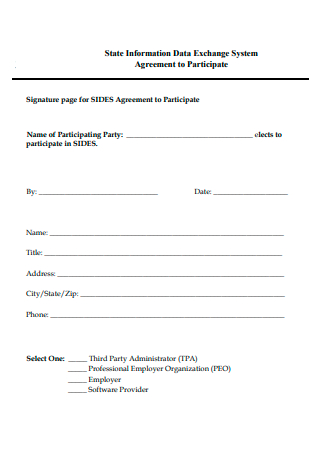
Data Exchange System Agreement
download now -
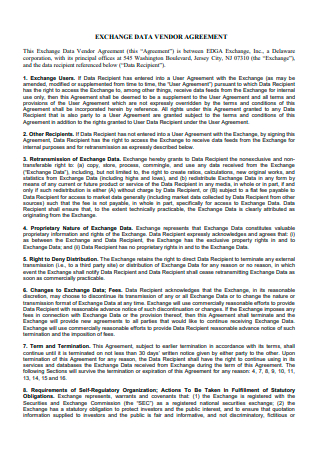
Data Exchange Vendor Agreement
download now -
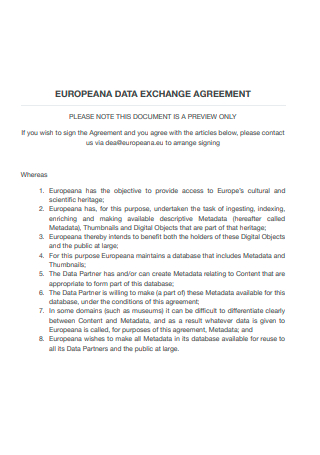
Draft Data Exchange Agreement
download now
What Is a Data Exchange Agreement?
Before we define the main agreement document, first and foremost, what is data exchange all about? Data exchange, in its most basic definition, is the process of transmitting and obtaining data in such a way that the information contained or meaning attributed to the data is not affected during transmission. Data exchange, in the context of business, describes the process of sharing data among multiple parties. It also enables various types of firms to access as many pieces of data as they need to power data-driven marketing operations and advertising, as well as to fill in any gaps of knowledge about their present audience, to discover what their preferences are when they aren’t on the company’s site.
Since the process of data exchange can be complicated and can involve some form of data that is very high in value but not necessarily confidential, rules need to be set between companies involved in a data exchange process, one of which is signing a data exchange agreement. A data exchange agreement is a legal document that specifies what type of data will be chosen to share among the relevant parties, who has access to that data, and the legal structures that specify how that information will be assigned, analyzed, and disseminated, as well as to whom it will be disseminated. This may also function as a sort of confidentiality agreement to ensure that no one other than the parties participating in the exchange agreement is aware of the details that have been exchanged. This agreement is the minimum standard of documents required for the companies concerned to participate in a data exchange endeavor.
What’s In a Data Exchange Agreement?
Here are some of the key components that make up an effective data exchange agreement; depending on the parties involved and the type of data to be exchanged, some more elements may need to be present.
How to Create a Data Exchange Agreement
As said earlier, depending on the companies involved in the data exchange agreement and the type of data to be involved in the entire exchange, a data exchange agreement may look different from one company to the next. But the common thing is, that it needs to be written properly in order for the document to be effective. With that being said, here are the necessary steps to take when writing a data exchange agreement:
1. Determine the Involved Parties
The first important step of creating the data exchange agreement is to determine who are the parties involved in this ordeal. It usually is simple in this case, as the parties involved in this agreement are usually just two different companies looking for different information to help them in cases such as marketing situations. In this step, the relevant addresses and contact details (such as emails, phone numbers, etc) of the companies need to be identified, as well as the details of the authorized people who will be involved in the transaction alongside their titles/roles within the organization they’re representing.
2. Write the Main Parts of the Document
After identifying who is involved in the data exchange agreement and after gathering their necessary details, it’s time to start writing the main parts/clauses of the document. Some of the main parts of the agreement include the intended purpose of the data exchange, the description of the data that is involved in the exchange, and the clause regarding data updates. The purpose of the data exchange clause should outline in broad terms the sort of data to be exchanged, the amount of data to be exchanged, the parties that are involved, and how the data will be utilized. The clause regarding the data description describes the data that will be obtained, utilized, or made accessible throughout the agreement and also identifies the kind and volume of the data that will be created, collected, or re-used. The updates section dictates when data should be shared and how often should it be shared.
3. Write the Boilerplate Parts
After the main parts of the agreement have been written down, it’s time to proceed with writing the boilerplate parts of the data exchange agreement. Some of the boilerplate parts of the agreement are the warranties section, indemnification section, and termination section. In the case of a data exchange agreement, the warranties section should safeguard the receiving company of the agreement but at the same time should make no guarantees about the quality of the data to be transferred. The indemnification section states that in the event of legal assertions against any of the parties to the agreement, existing legal rules and principles will apply, while the termination section indicates the terms in which the agreement can be terminated or modified in a data exchange agreement and also stipulates how the data involved in the exchange should be disposed of.
4. Finalize the Agreement
After the main and boilerplate parts of the data exchange agreement have been written down, it’s time to finalize the entire document. In this step, perform any final checks, including verifying for any errors and inconsistencies in the document, checking if there are any clauses that are missing, and checking if everything that needs to be included in the document is present. When all the final checks have been completed and the parties are satisfied, then the last step would be to put the agreement into action by signing it.
FAQs
What is Qualitative Data?
Qualitative data is a category of data that uses a finite number of discrete classifications to characterize the item under study. This means that this sort of data cannot be readily tallied or quantified using numbers and must therefore be categorized. This form of data typically answers questions such as “how this happened” or “why this happened,” and it typically consists of words, images, and symbols rather than numbers.
Who benefits from data exchange?
An example of an entity that can benefit from data exchange would be various agencies. Data exchange allows agencies to climb above their rivals and exceed client expectations by giving them access to data they wouldn’t otherwise see, allowing them to target their campaign efforts, enhance engagement, and consolidate and manage their customers’ databases. All of the data exchanged may assist agencies to attain highly appropriate content and delivery, resulting in maximum engagement and keeping their clients returning for more.
What is Nominal Data?
Nominal data is a type of data under the qualitative data type that is only used to name variables and has no quantitative value. This form of data is essentially a collection of values that do not have a natural ordering. In other words, there is no underlying ordering of variables in nominal data.
As stated earlier, having a data exchange agreement in place should be one of the rules that need to be followed when both parties decide to participate in a data exchange endeavor. This enables both parties to have a legal framework in place that can protect the security of the companies involved in the agreement as well as the value of the data involved in the exchange. In this article, there are plenty of sample templates that exist that can help you have a further understanding of this topic should you need one.
